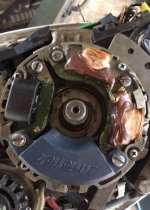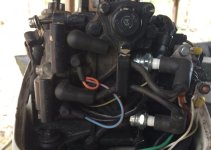timguy
Silver Medal Contributor
Yes, I agree with Mr. Scott. We need a proper spark test. If you hit something and key is sheared, you will still have spark, but not in time.....as previously mentioned. It will likely try to fire. You also mentioned that previous to the failure, it started better pulling over by using the recoil, because the electric starter is too slow and also drains your battery. You should be getting perhaps 100 starts on a good quality battery on this tiny starter. That is with even with no charging to the battery.
P.S. Mr. Scott, nobody agreed with me, so I came back. It wouldn't be any fun without you to disagree with me anyway.
P.S. Mr. Scott, nobody agreed with me, so I came back. It wouldn't be any fun without you to disagree with me anyway.



